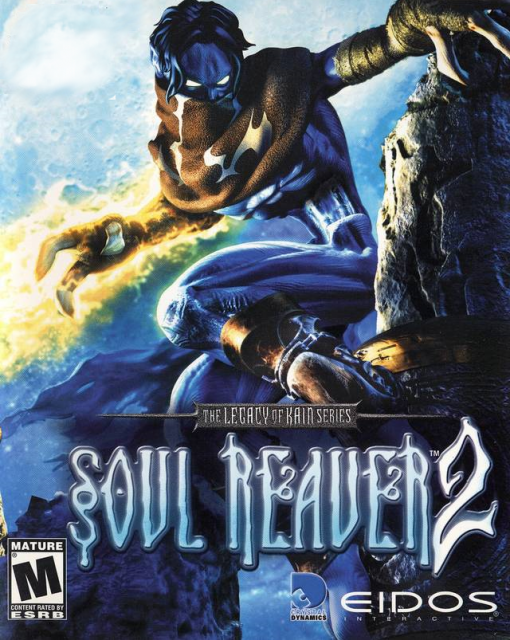A much improved but shallow entry in the franchise
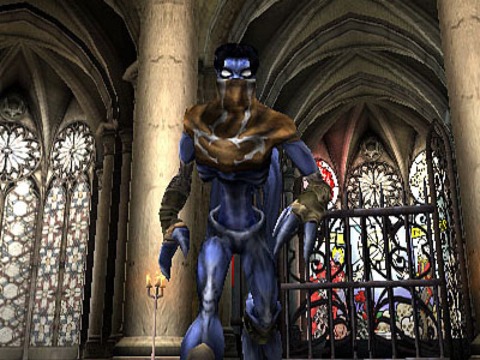
Legacy of Kain: Soul Reaver 2 picks up immediately after the events of the original game. Raziel, the player character, has chased his old master Kain through a time portal and finds himself in the distant past of Nosgoth, in a time before Kain’s actions doomed the land in the original Blood Omen. As Raziel continues his quest to enact his vengeance on Kain, he learns more about his heritage and the many intricate details that make up Nosgoth. Through his actions, Raziel hopes to learn the real truth of all the world’s mysteries.
In fact, Raziel’s main goals often take a backseat in Soul Reaver 2. While the plot does keep moving forward and remains relevant until the very end, most of the voiceover and (long!) cutscenes focus on telling the story of Nosgoth. Several cutscenes feature Raziel’s internal voice monologuing over a new area, describing what he sees and what it means in the context of the world. It’s all done extremely well and helps to sell the world as a real place, but I often felt that the writers preferred to explore their creation instead of actually continuing the narrative. This is a noble goal, but it is often at the cost of the main plot, which can be quite interesting on its own.
Once again, the main strength of the story is in its writing. Few games pack in so many sharply written lines, dripping with subtext and emotion from the excellent voice cast. Nosgoth is also a fleshed-out place, with a vast history that makes me excited to learn more about it in the future games of the series. Unfortunately, Soul Reaver 2 stumbles in one of the same ways the first did: in its resolution. Things are again left unanswered by the the conclusion and another cliffhanger bookends the final moments, albeit one that is slightly less egregious than before. I found this frustrating, especially in a game that managed to handle everything so well up until the final hour or so.
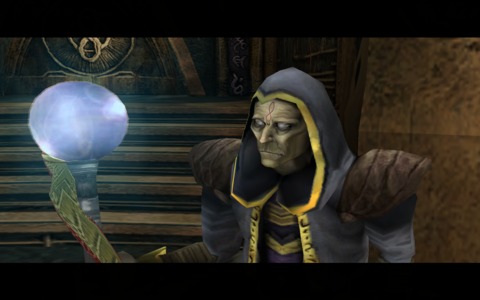
Gameplay in Soul Reaver 2 feels both similar to and different from the gameplay in the original game. The same mix of platforming, combat, exploration, and puzzle-solving exists, but the amount of each has shuffled around. Exploration has become much less important, for example. The world is much larger in size but is now extremely linear in scope. You are gated heavily from exploring by various doors which require special powers to open. Several of the main areas even permanently close after you finish them, preventing you from returning. Health upgrades and bonus powers are gone too, meaning there is absolutely no reason to explore the world.. On one hand, I really appreciate that I didn’t have to go and find a bunch of stupid crap; on the other hand, however, it made the entire game feel a bit constrained and short.
Like its predecessor, it can be a bit hard to figure out where to go in Soul Reaver 2. While the original game featured absurd pitch-black areas and labyrinthine level design, most of the confusion in this game comes from figuring out what exactly it wants from you. I had a few moments where I couldn’t even begin to make progress because I had no idea what I was capable of doing as the player. For awhile, I had to push at the boundaries of the game and realize just what it would let me do.
Soul Reaver 2 also makes the assumption that you have played the original. Aside from showing the final events of the Soul Reaver 1, it doesn’t give you any information. This also applies to some important things like controls, how the puzzles work, and where you are expected to go. For those who haven’t played the original, it may be a bit hard to find your way at first. It’s also worth noting that it is VITALLY important to pay attention to Raziel’s incidental dialogue at all times, as he often tells you where to head next. This is often the only hint you get as to where to go. Missing this information can have you lost for several minutes as you find the one place you can progress. As the player, you must keep an ear out for this dialogue or be ready to consult a guide.
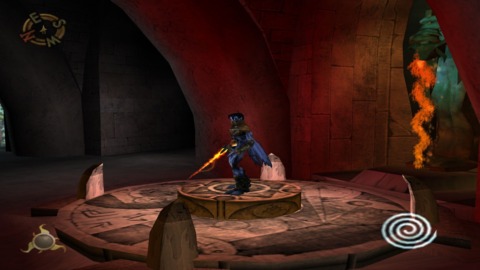
Platforming and puzzle-solving have both seen major improvements. The controls feel much tighter, and none of the absurdly-precise platforming sections return from the previous game; any of the platforming I was required to do (which is much less, in total) was no longer a massive headache. In terms of the puzzles, there is very little of the block-pushing that dominated the original game. Instead, the puzzles mix things up nicely, often introducing new elements to tinker with as you imbue your Soul Reaver with four elements, one from each of the game’s main dungeons. I never got stuck for long but still managed to feel smart after I solved a puzzle, a nice and friendly balance I enjoyed.
Finally, the combat has managed to become even more simple, something I wouldn’t have thought possible. While Soul Reaver 1 had you spearing enemies or throwing them into various hazards to finish them off, no such thing is required in Soul Reaver 2. You simply lock onto an enemy, block their attacks, and hammer on the attack buttons until they die. It’s also noteworthy to say that the way your main weapon, the Soul Reaver, works has changed: whereas before you could only use it at full health, it is now available whenever you like. It has become vicious entity all its own, though, draining your health if you use it too often. Even with this restriction, you can keep it on the majority of the time and lay waste to the game’s enemies.
Fighting is absurdly easy, at least until the very end of the game. Frustrating block-heavy enemies begin to appear, which is made worse by the inability to perform any kind of guard break; I eventually resorted to running circles around enemies in order to down them. For the most part, the fighting is completely pointless. I safely ran past the vast majority of enemies, stopping to fight the ones who created barriers or the ones who got in the way of my puzzle-solving. Even the final boss (who is the only boss, by the way) is a complete joke, posing absolutely no challenge for reasons I won’t reveal here. It made me feel like the developers didn’t really want to have combat in their game but included it because it felt necessary.
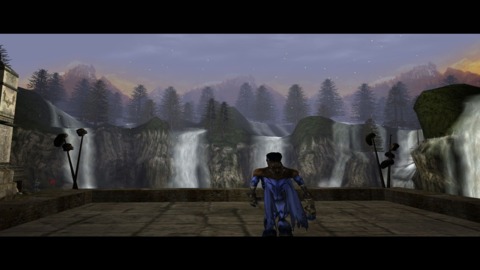
Saving in Soul Reaver 2 has become much what you would expect from a game in its era: you find a save point and make a save. It’s important to note, however, that these save points are quite infrequent. I went over an hour without saving on multiple occasions simply because I didn’t encounter another save point. Many of the dungeon areas don’t include a save point, meaning you have to clear the entire thing or leave the dungeon before saving again. This can prove to be disastrous if you experience a game crash or a power outage.
Like with the original, I had a few issues with the PC port of Soul Reaver 2. I couldn’t use my gamepad without the use of a third-party keymapping program, due to the game’s inability to bind the movement or to use my controller’s triggers. I also had some problems with audio quality: sometimes, it sounded as if everything had dropped to an extremely low bitrate before fixing itself. Finally, the game crashed during the final cutscene, meaning I had to trek through a half-hour of the boring endgame in order to see how it all ended. For the most part, it’s stable enough to play through, but I would be wary of any potential issues. Save often and be prepared to maybe use a keyboard.
Legacy of Kain: Soul Reaver 2 is a strange game. In equal parts, it feels like the developers better realized their ideas for the original game and took several steps back from those original designs. While Soul Reaver 2 is more ambitious in several ways, it actually shrank in scope from its PS1 counterpart. I think it’s a much sharper game, still quite playable for a modern player, but I do miss some of that ambition from Soul Reaver 1, no matter how rough that game was. I enjoyed spending my eight hours with it, but I wish I had gotten to spend more, learning more about Nosgoth. My hopes are that the final game in this saga (as I’ve already played Blood Omen 2, which technically comes next) manages to bring it all together into a perfect conclusion.
